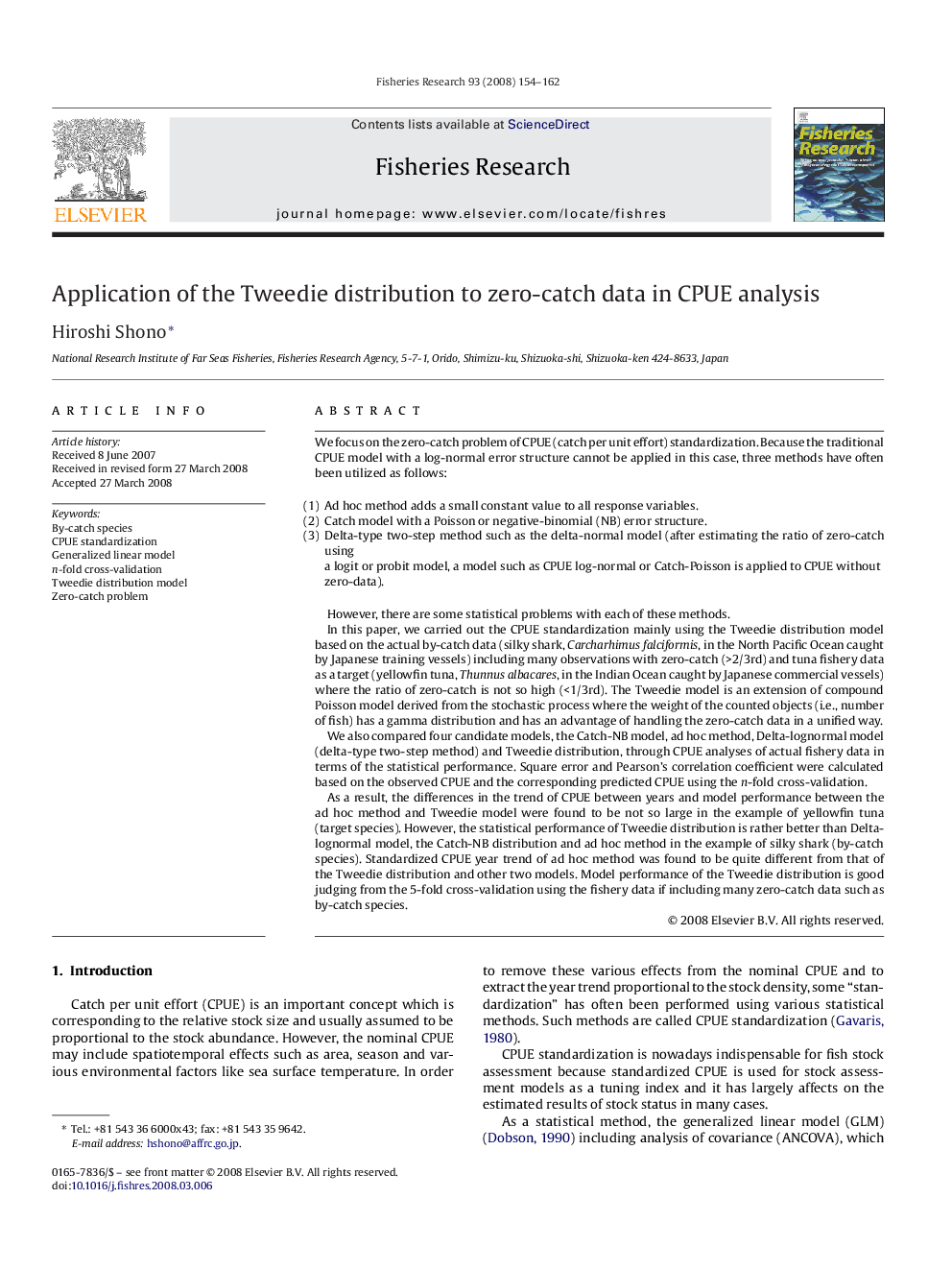| کد مقاله | کد نشریه | سال انتشار | مقاله انگلیسی | نسخه تمام متن |
|---|---|---|---|---|
| 4544286 | 1626858 | 2008 | 9 صفحه PDF | دانلود رایگان |

We focus on the zero-catch problem of CPUE (catch per unit effort) standardization. Because the traditional CPUE model with a log-normal error structure cannot be applied in this case, three methods have often been utilized as follows:(1)Ad hoc method adds a small constant value to all response variables.(2)Catch model with a Poisson or negative-binomial (NB) error structure.(3)Delta-type two-step method such as the delta-normal model (after estimating the ratio of zero-catch using a logit or probit model, a model such as CPUE log-normal or Catch-Poisson is applied to CPUE without zero-data).However, there are some statistical problems with each of these methods.In this paper, we carried out the CPUE standardization mainly using the Tweedie distribution model based on the actual by-catch data (silky shark, Carcharhimus falciformis, in the North Pacific Ocean caught by Japanese training vessels) including many observations with zero-catch (>2/3rd) and tuna fishery data as a target (yellowfin tuna, Thunnus albacares, in the Indian Ocean caught by Japanese commercial vessels) where the ratio of zero-catch is not so high (<1/3rd). The Tweedie model is an extension of compound Poisson model derived from the stochastic process where the weight of the counted objects (i.e., number of fish) has a gamma distribution and has an advantage of handling the zero-catch data in a unified way.We also compared four candidate models, the Catch-NB model, ad hoc method, Delta-lognormal model (delta-type two-step method) and Tweedie distribution, through CPUE analyses of actual fishery data in terms of the statistical performance. Square error and Pearson's correlation coefficient were calculated based on the observed CPUE and the corresponding predicted CPUE using the n-fold cross-validation.As a result, the differences in the trend of CPUE between years and model performance between the ad hoc method and Tweedie model were found to be not so large in the example of yellowfin tuna (target species). However, the statistical performance of Tweedie distribution is rather better than Delta-lognormal model, the Catch-NB distribution and ad hoc method in the example of silky shark (by-catch species). Standardized CPUE year trend of ad hoc method was found to be quite different from that of the Tweedie distribution and other two models. Model performance of the Tweedie distribution is good judging from the 5-fold cross-validation using the fishery data if including many zero-catch data such as by-catch species.
Journal: Fisheries Research - Volume 93, Issues 1–2, 1 September 2008, Pages 154–162